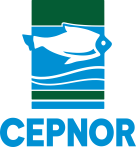Artigo 05
COMPOSIÇÃO QUÍMICA DO CONTEÚDO ESTOMACAL DA TARTARUGA-DA-AMAZÔNIA, Podocnemis expansa (SCHWEIGGER,1812), EM AMBIENTE NATURAL
| Boletim Técnico Científico - Volume 4 - Numero 5 |
| Resumo |
|---|
| A tartaruga-da-amazônia, Podocnemis expansa tem sua distribuição associada ao sistema hidrográfico da bacia amazônica, sendo uma espécie silvestre que começou a ser explorada na forma de produto cultivado para comercialização. No entanto, a dificuldade encontrada quanto à questão nutricional demanda um custo de produção bastante elevado. Este trabalho tem como objetivo analisar a composição química do conteúdo gástrico da tartaruga-da-amazônia em condições de vida livre, a fim de se determinar o valor nutritivo dos alimentos ingeridos e fornecer subsídios na preparação de dietas a serem utilizadas em sistemas de cultivo. O conteúdo estomacal foi retirado para identificação qualitativa dos itens alimentares e análises físico-químicas dos índices de proteína bruta, PB (16,84%) lipídios, EE (6,50%), fibra bruta, FB (16,85%), cinzas, MM (30,05%) e energia bruta, EB (6.087 kcal/kg). No ambiente natural, P. expansa pode ser considerada de hábito onívoro, mas com predominância de vegetais (68%). A composição química da dieta natural apresenta baixos teores de proteína bruta quando comparada àquela utilizada para indivíduos em cativeiro. O índice de fibra bruta indica a possibilidade de que a tartaruga-da-amazônia precise ingerir alimentos com elevado teor desse nutriente em função do jejum prolongado comumente observado na espécie. Os níveis percentuais da composição química do conteúdo estomacal de P. expansa poderão nortear o conhecimento de suas exigências nutricionais para criação controlada, haja vista não se ter ainda estudos similares à metodologia aplicada. |
| Abstract |
|---|
| The Amazon turtle, Podocnemis expansa, has its distribution associated with the hydrographic system of the Amazon basin, being a wild species that has just begun to be submitted to cultivation with commercial purposes. However, difficulties in coping with nutritional demands imply high production costs. This paper has been designed to determine the feeding diet and analyze the chemical composition of the gut content of the Amazon turtle in the environment, in order to assess the nutritional value of ingested food, and to know how to prepare feeds to be used in its rearing. The gut content was extracted for qualitative identification of feeding items and physical-chemical analysis of indices of gross protein (16.84%), lipids (6.50%), gross fiber (16.85%), ashes (30.05%) and gross energy (6,087 kcal per kg). In the environment, P. expansa may be considered to have an omnivorous diet but the gut content was shown to be mainly made up vegetables, estimated at 68%. The proximate composition of the gut content of P.expansa in the environment has a lower gross protein content than that of feeds used for reared individuals. The estimated index of gross fiber indicates the possiblity that the Amazon turtle requires gross fiber-rich foods so that the high content of that nutrient makes up for the lengthy fast periods to which it is usually submitted. Estimates of the proximate composition of the gut content of P. expansa should come very useful for providing information on its feeding requirements under cultivation, given that no previous such studies are available as are similar to the applied methodology. Key words: Amazon turtle, Podocnemis expansa, gut content, proximate composition, Amazon region, Brazil. |
| Palavras-Chave |
tartaruga-da-Amazônia, Podocnemis expansa, conteúdo estomacal, composição química, Amazônia. |
